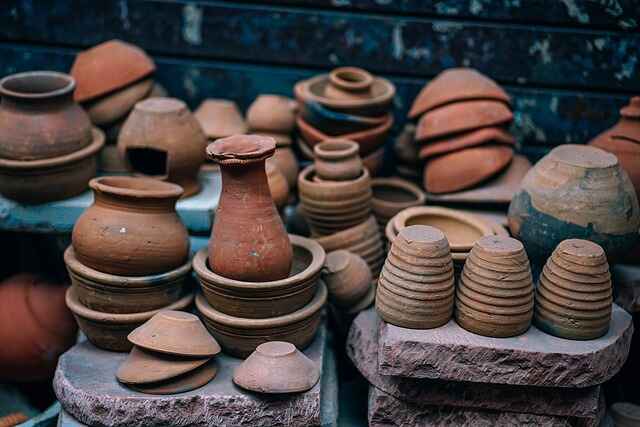
Artists and crafters know that a well-maintained set of supplies is key to unlocking their creative potential. Yet, the task of cleaning art and craft materials is often overlooked. In this detailed guide, we will explore the importance of maintaining clean supplies, and provide you with a comprehensive set of tips on how to keep your artistic tools in top-notch condition. Whether you’re a seasoned artist or just starting your creative journey, these simple yet effective cleaning practices will ensure that your supplies are ready to bring your imagination to life.
The Importance of Cleaning Your Art and Craft Supplies
Preserving Quality and Longevity
- Paintbrushes: Cleaning paintbrushes after each use prevents paint from drying, preserving bristle integrity and extending their lifespan.
- Palette Knives: Proper cleaning prevents color mixing residue, maintaining the integrity of each color on your palette knives.
- Crafting Tools: Clean cutting tools and blades regularly to ensure precision and prevent them from becoming dull.
Maintaining Consistency in Colors
- Paint Palettes: Regularly cleaning paint palettes ensures that your colors stay true, avoiding unintended color shifts in your artwork.
- Blending Tools: For artists working with blending stumps or brushes, keeping them clean prevents color contamination, allowing for precise blending.
Preventing Cross-Contamination
- Water Cups: Change water in water cups frequently to avoid mixing dirty water with clean, preventing color contamination during watercolor or acrylic painting.
- Workspace Cleaning: Wipe down your work surface regularly to prevent dust or debris from settling onto your artwork.
Cleaning Different Art and Craft Supplies
1. Paintbrushes
- Immediate Cleaning: Clean brushes immediately after use by rinsing them with water to remove excess paint.
- Soap and Water: Use a gentle soap and warm water to clean bristles thoroughly. Avoid harsh chemicals that can damage the brush.
- Reshape and Dry: Reshape the brush and allow it to dry horizontally to maintain its original form.
2. Paint Palettes
- Scraping: Scrape off excess paint with a palette knife before cleaning.
- Warm Water and Soap: Soak the palette in warm, soapy water, and gently scrub to remove any remaining paint.
- Avoiding Acetone: Avoid using acetone or strong solvents, as they can damage some palette materials.
3. Drawing Tools
- Sharpening Pencils: Regularly sharpen pencils to maintain a fine point. Use a dedicated pencil sharpener for art pencils.
- Cleaning Erasers: Gently wipe kneaded erasers with a clean cloth to remove graphite and charcoal residue.
4. Cutting Tools and Blades
- Blade Cleaning: Wipe blades with a damp cloth after each use to remove any residual material.
- Sharpening Blades: Regularly sharpen craft knives to ensure clean and precise cuts.
5. Fabric and Fiber Supplies
- Lint Removal: For sewing and textile crafts, remove lint and debris from fabric and thread regularly.
- Oil Stains: Treat oil or ink stains on fabric with appropriate stain removers promptly.
Storage and Organization Tips
1. Proper Storage
- Ventilated Containers: Store supplies in well-ventilated containers to prevent mold growth.
- Separate by Medium: Keep different mediums separate to avoid cross-contamination.
2. Labeling Supplies
- Clearly Label Jars: Label containers and jars to easily identify contents and expiration dates.
- Inventory Check: Periodically check your supplies and discard any expired or unusable materials.
DIY Cleaning Solutions
Brush Cleaner
- Olive Oil and Soap: Mix equal parts olive oil and mild soap for a gentle brush cleaner.
- Vinegar Rinse: For acrylic brushes, a vinegar rinse can help remove stubborn paint.
Palette Cleaning
- Baking Soda Soak: Soak palettes with dried acrylic paint in a mixture of baking soda and water to loosen the paint.
- Baby Oil Finish: Wipe palettes with a small amount of baby oil to keep them smooth and easy to clean.
Safety Considerations
Ventilation
- Use in Well-Ventilated Areas: Ensure that cleaning is done in a well-ventilated space, especially when using solvents.
- Protective Gear: Wear gloves to protect your hands from harsh cleaning agents.
Conclusion
A clean and well-maintained set of art and craft supplies is the foundation of a successful and enjoyable creative process. When you incorporate these simple cleaning practices into your routine, you not only preserve the quality of your tools but also enhance the longevity of your artistic endeavors. Remember, a clean canvas and well-kept tools invite endless possibilities for creativity to flourish. Take the time to care for your supplies, and they will, in turn, help you bring your artistic visions to life.

